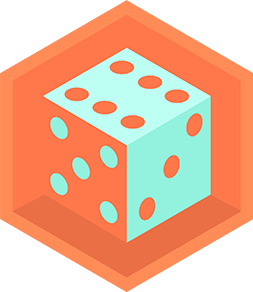Design a card game
Design and build a simple card game using paper cards, markers, written rules, and playtesting to learn creativity, logic, and fair play.



Step-by-step guide to design a card game
How to play crazy 8s -kids card game - tutorial
Step 1
Gather all materials into one spot so you can reach them easily.
Step 2
Pick a fun theme for your card game like animals spies or space explorers.
Step 3
Decide how many players can play your game so you know how many cards you need.
Step 4
Choose a clear winning condition such as first to collect five cards or be the last player standing.
Step 5
Plan the types of cards you need (for example action cards number cards and special cards) and how many of each.
Step 6
Draw a simple card template on one sheet of paper showing where the title picture and score will go.
Step 7
Cut your paper into the right number of cards using scissors or have an adult help cut them.
Step 8
Use markers and pencil to draw and label each card according to your plan.
Step 9
Write a short rules sheet that explains setup turn order what each card does and how to win.
Step 10
Put together a small prototype deck shuffle it and set up players to start a quick playtest.
Step 11
Play one short game and watch for confusing rules or cards that seem too strong or too weak.
Step 12
Change the cards or rules to fix problems you noticed and test again until it feels fair and fun.
Step 13
Give your game a cool name tidy your rules sheet and share your finished creation on DIY.org
Final steps
You're almost there! Complete all the steps, bring your creation to life, post it, and conquer the challenge!


Help!?
What can we use instead of cardstock, markers, or scissors if those materials are hard to find?
Use cereal-box cardboard cut with household scissors or ask an adult to help cut printer paper folded into cards, and replace markers with crayons or colored pencils when following the 'cut your paper into the right number of cards' and 'use markers and pencil' steps.
During the first playtest some cards felt overpowered and the rules were confusing—what should we fix first?
During the 'play one short game' step, simplify confusing rule text on your written rules sheet and rebalance by reducing the number or strength of any action or special cards you planned in 'plan the types of cards' before testing again.
How can we change the game to suit very young children or older kids?
For young children, make larger picture-only cards, fewer card types, and an easy winning condition like 'first to collect three matching cards' and have an adult do the 'cut your paper' step, while older kids can add more action cards, complex scoring, and a detailed rules sheet as described in 'write a short rules sheet.'
What are simple ways to improve or personalize our finished card game?
Personalize and improve your game by decorating cards from your drawn template with stickers or glitter, reinforcing them with clear tape for durability, adding expansion cards in the 'plan the types of cards' step, and giving it a cool name before you 'share your finished creation on DIY.org.'
Watch videos on how to design a card game
How to Play Go Fish | Easy Rules
Facts about game design for kids
✍️ Clear written rules prevent arguments — great games often include a one-page quick-start plus detailed rules.
🃏 A standard modern deck has 52 cards and 4 suits — many designers borrow or remix this familiar set.
🎴 Card games go back over 1,000 years — playing cards were invented in China around the 9th century.
🧠 Designing a card game teaches logic and systems thinking: small rule tweaks can completely change player strategy.
🧪 Playtesting is essential: most prototypes need multiple (often 5–20+) playtests to find balance and rule problems.
How do I help my child design and build a simple card game?
What materials do I need to design a paper card game with my child?
What ages is designing a simple card game suitable for?
What are the benefits of designing a card game with my child?


One subscription, many ways to play and learn.
Only $6.99 after trial. No credit card required


